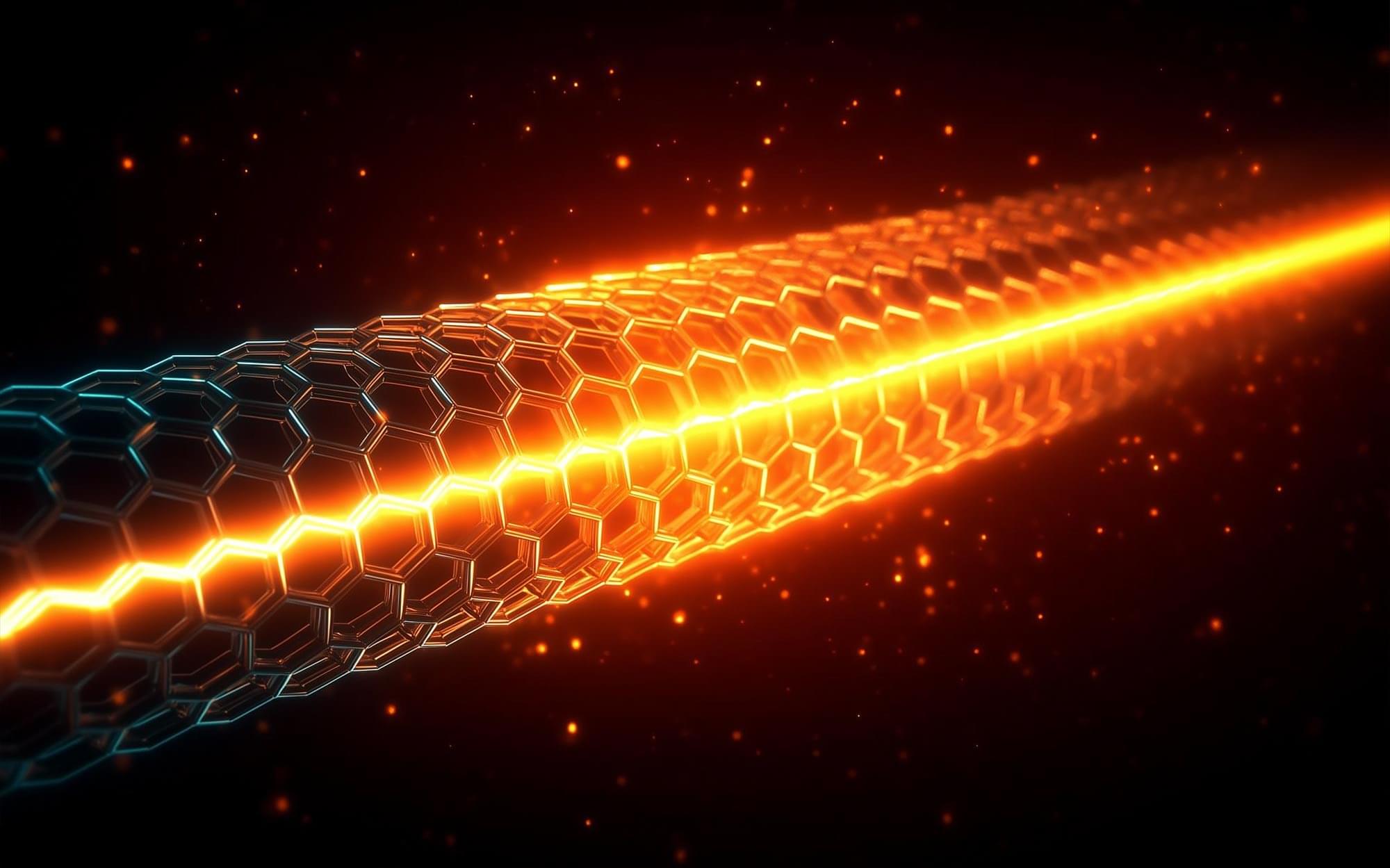Vaccines for livestock could reduce the risk of human outbreaks, but hurdles remain.



Skeletal editing is a modern approach to chemical synthesis. By making precise alterations at the atomic level, researchers are able to directly convert existing drug scaffolds into new, biologically relevant compounds.
A team led by chemist Prof Armido Studer from the University of Münster has developed a new strategy based on this technique to swap carbon atoms with nitrogen atoms (“C-to-N atom swapping”). The process functions within indole and benzofuran frameworks. These chemical structures, which contain two molecular rings consisting mainly of carbon, are common building blocks of pharmaceuticals and natural products.
“This technique expands the synthetic toolbox available for skeletal editing,” explains doctoral student Zhe Wang, who carried out most of the experimental work. It represents a step forward in the development of new molecules from established pharmacophores, i.e. the molecular components responsible for pharmacological effects.

Have you ever imagined what Antarctica looks like beneath its thick blanket of ice? Hidden below are rugged mountains, valleys, hills and plains.
Some peaks, like the towering Transantarctic Mountains, rise above the ice. But others, like the mysterious and ancient Gamburtsev Subglacial Mountains in the middle of East Antarctica, are completely buried.
The Gamburtsev Mountains are similar in scale and shape to the European Alps. But we can’t see them because the high alpine peaks and deep glacial valleys are entombed beneath kilometres of ice.
I honestly don’t know how I should be educating my kids. A.I. has raised a lot of questions for schools. Teachers have had to adapt to the most ingenious cheating technology ever devised. But for me, the deeper question is: What should schools be teaching at all? A.I. is going to make the future look very different. How do you prepare kids for a world you can’t predict?
And if we can offload more and more tasks to generative A.I., what’s left for the human mind to do?
Rebecca Winthrop is the director of the Center for Universal Education at the Brookings Institution. She is also an author, with Jenny Anderson, of “The Disengaged Teen: Helping Kids Learn Better, Feel Better, and Live Better.” We discuss how A.I. is transforming what it means to work and be educated, and how our use of A.I. could revive — or undermine — American schools.
00:00 Intro.
03:03 The future of education?
11:20 Modes of engagement.
17:27 Personalizing education.
26:25 The case for A.I. in schools.
35:09 Who gets left behind?
46:07 How A.I. can increase equity.
49:35 Becoming more human.
55:54 Willpower, literacy, and regulation.
01:01:10 Advice for parents.
01:05:20 Book recommendations.

We just celebrated May the 4th, and now this.
You’re watching: 2025’s VOLONAUT AIRBIKE – The Jet-Powered Flying Bike That’s Actually Real!
Forget sci-fi… this is the future happening right now. The Volonaut Airbike isn’t just a concept or a CGI teaser — it’s a real, jet-powered flying bike that’s already tearing through the skies in 2025!
Unlike bulky drones with spinning blades, this beast lifts off with raw jet propulsion — no exposed rotors, no cockpit, and no nonsense. It’s built from carbon fiber and 3D-printed parts, making it ultra-light — 7x lighter than a motorcycle. The rider becomes part of the machine, steering it by body movement while a smart onboard flight computer keeps everything stable.
Created by Tomasz Patan, the genius behind Jetson ONE, the Volonaut Airbike is capable of reaching speeds up to 200 km/h (124 mph), soaring over forests, cliffs, and even deserts with mind-blowing agility.
In this in-depth interview, Joscha Bach shares his insights into AI: what it illuminates about consciousness, how it will develop, and what it means for humanity.
Is AI our only chance at achieving real understanding?
With a free trial, you can watch our full archive of Joscha Bach’s talks and debates at https://iai.tv/home/speakers/joscha-b… Introduction 00:08 What is Artificial General Intelligence, and how far away are we from creating it? 01:08 Do you consider AI humanlike now? 02:43 Why do you defend a computational perspective? 03:44 Is AI the method for the universe to understand itself? 04:26 How is AI transforming society now, and how will it transform society in the next few years? 05:20 Do you think we have the capacity to reconceive how our institutions will function in light of these changes? 06:17 How could AI help us solve the climate crisis, when our biggest problem is inaction? 08:24 Have we become less critical, as a species? 10:40 Would you agree that social media has been detrimental to our society? 12:58 How do you think AGI will be realised? 18:46 What are the differences between evolved systems and designed systems? 20:31 What did you think of the infamous open letter about AI safety? 24:24 How can we solve AI’s misalignment to human values? 25:43 Do you have hope for the future? 27:33 Do you think it’s possible to build a machine that understands? 30:32 Do you think that we are living in base reality? Join cognitive scientist and AI researcher Joscha Bach in this exclusive interview on the limits, risks, and future of AI. From the potential of Artificial General Intelligence to the alignment problem and the fundamental ways AI learns differently from humans, Bach explores whether AI might one day grasp reality on a deeper level than we can. He also examines the systemic failures of institutions in tackling the climate crisis and the COVID-19 pandemic, arguing that the internet’s potential for collective intelligence remains largely untapped. Might AI help us overcome these challenges, or does it merely reflect our own limitations? Interviewed by Darcy Bounsall. #ai #agi #artificialintelligence #artificialgeneralintelligence #consciousness #computerscience Joscha Bach is a cognitive scientist, AI researcher, and philosopher whose research aims to bridge cognitive science and AI by studying how human intelligence and consciousness can be modelled computationally. The Institute of Art and Ideas features videos and articles from cutting edge thinkers discussing the ideas that are shaping the world, from metaphysics to string theory, technology to democracy, aesthetics to genetics. Subscribe today! https://iai.tv/subscribe?utm_source=Y… For debates and talks: https://iai.tv For articles: https://iai.tv/articles For courses: https://iai.tv/iai-academy/courses.
00:00 Introduction.
00:08 What is Artificial General Intelligence, and how far away are we from creating it?
01:08 Do you consider AI humanlike now?
02:43 Why do you defend a computational perspective?
03:44 Is AI the method for the universe to understand itself?
04:26 How is AI transforming society now, and how will it transform society in the next few years?
05:20 Do you think we have the capacity to reconceive how our institutions will function in light of these changes?
06:17 How could AI help us solve the climate crisis, when our biggest problem is inaction?
08:24 Have we become less critical, as a species?
10:40 Would you agree that social media has been detrimental to our society?
12:58 How do you think AGI will be realised?
18:46 What are the differences between evolved systems and designed systems?
20:31 What did you think of the infamous open letter about AI safety?
24:24 How can we solve AI’s misalignment to human values?
25:43 Do you have hope for the future?
27:33 Do you think it’s possible to build a machine that understands?
30:32 Do you think that we are living in base reality?
Join cognitive scientist and AI researcher Joscha Bach in this exclusive interview on the limits, risks, and future of AI. From the potential of Artificial General Intelligence to the alignment problem and the fundamental ways AI learns differently from humans, Bach explores whether AI might one day grasp reality on a deeper level than we can. He also examines the systemic failures of institutions in tackling the climate crisis and the COVID-19 pandemic, arguing that the internet’s potential for collective intelligence remains largely untapped. Might AI help us overcome these challenges, or does it merely reflect our own limitations?
Interviewed by Darcy Bounsall.

PricewaterhouseCoopers (PwC) told 1,500 U.S. employees on Monday that their roles were eliminated with immediate effect—about 2 percent of its national headcount. In the company-wide e-mail obtained by industry blog Going Concern, leadership cited “historically low attrition” and a need to “align the firm for the future.” Publicly, a spokesperson framed the move as a […]
Good channel here.
The future of human longevity just got a $500billion booste thanks to Trump’s bold new AI vision! In this video, we explore the recently announced Stargate AI Infrastructure Project—a staggering $500 billion initiative unveiled by President Donald Trump on January 21, 2025, alongside tech titans OpenAI, Oracle, and SoftBank. Designed to build colossal data centers and supercharge AI development, could this ambitious plan hold the key to curing aging? We dive into the cutting-edge science, the potential of AI to revolutionize healthcare, and how Stargate might reshape humanity’s fight against time. Buckle up for a wild ride into the future!
🔍 What You’ll Discover:
The Stargate Project: Trump’s massive AI infrastructure gamble.
How AI could unlock breakthroughs in aging research.
The players: OpenAI, Oracle, SoftBank, and their bold vision.
The big question: Can this tech triumph over mortality?
JOIN LSN Patreon for exclusive access to news, tips and a community of like minded longevity enthusiasts: https://www.patreon.com/user?u=29506604
🔔 Like, subscribe, and hit the bell for more groundbreaking insights every week! Tell us in the comments: Do you think Stargate could be the key to curing aging? Let’s debate it!
